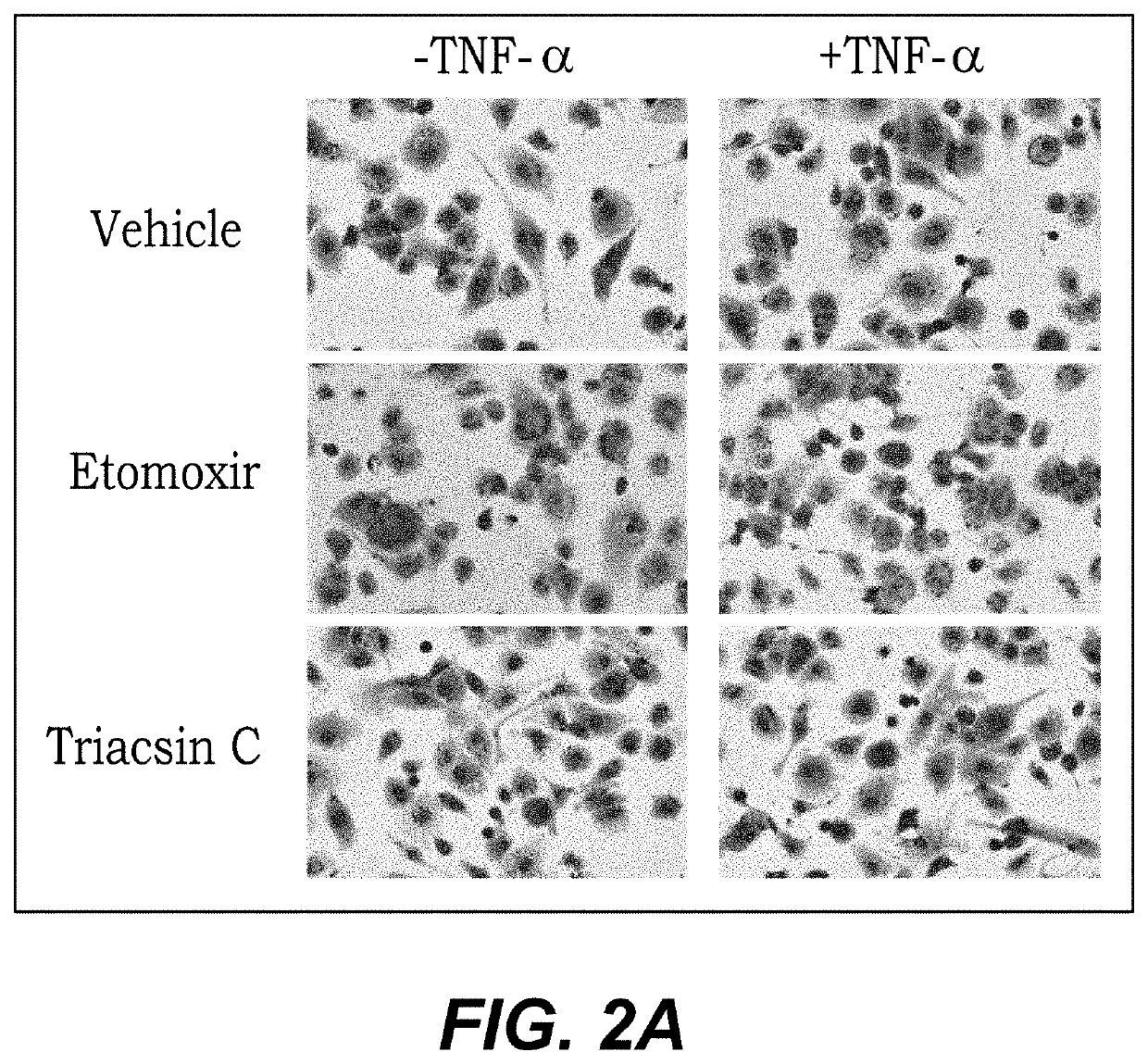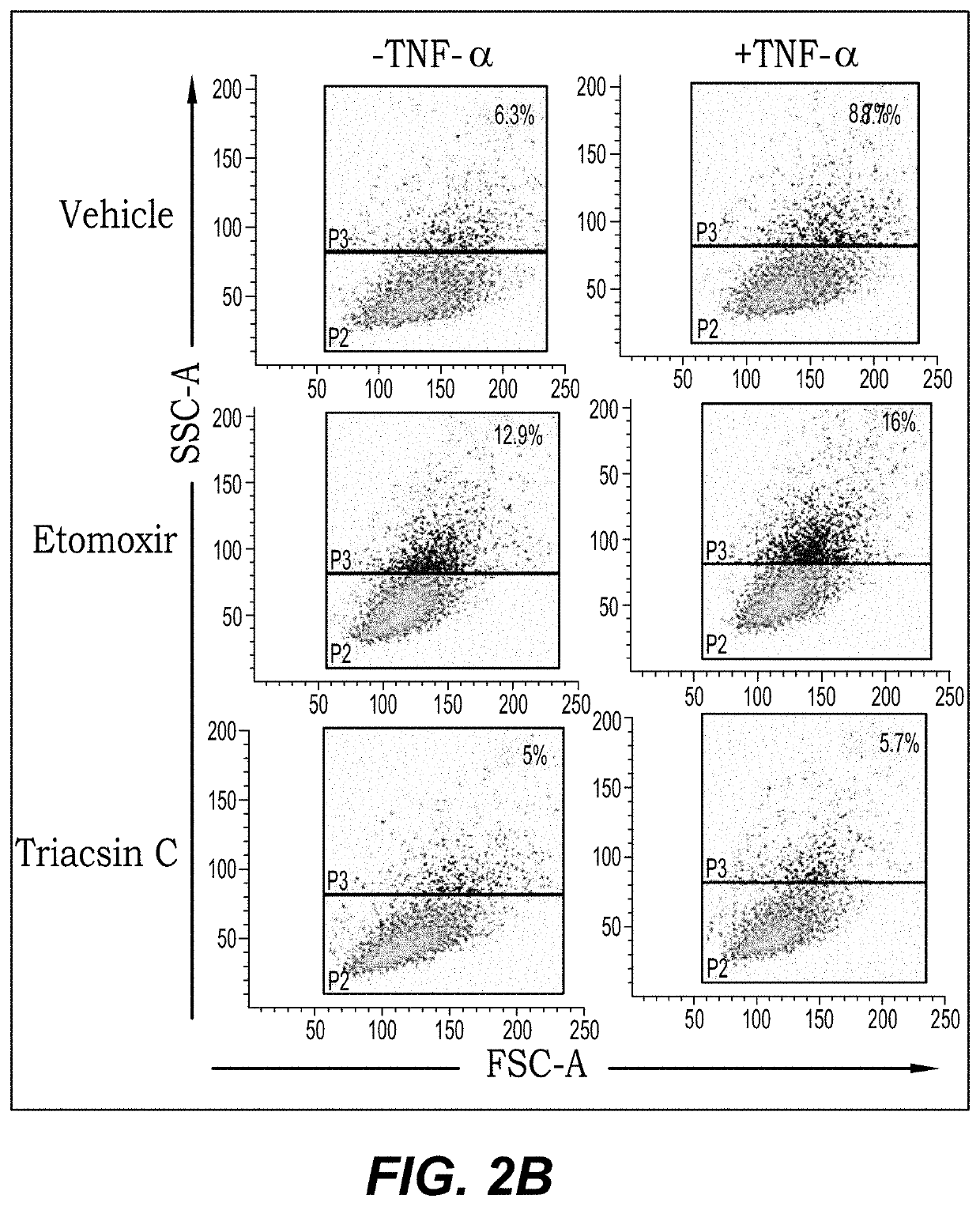Method of treating postprandial inflammation and preventing weight gain
a postprandial inflammation and postprandial inflammation technology, applied in the field of formulations and methods useful in treating inflammation, inhibiting an inflammatory response, and preventing weight gain, can solve the problems of sustained or extreme monocyte/macrophage pro-inflammatory response, most become unusable, and damage to the body, so as to prevent or minimize the acute effect of said sfa
- Summary
- Abstract
- Description
- Claims
- Application Information
AI Technical Summary
Benefits of technology
Problems solved by technology
Method used
Image
Examples
example 1
Materials and Methodologies
[0052]Cell culture: Human monocytic leukemia cell line (THP-1) cells were purchased from American Type Culture Collection (ATCC). Cell cultures were maintained in RPMI-1640 culture medium (Gibco, Life Technologies, Grand Island, USA) supplemented with 10% fetal bovine serum (Gibco, Life Technologies, Grand Island, N.Y., USA), 2 mM glutamine (Gibco, Invitrogen, Grand Island, N.Y., USA), 1 mM sodium pyruvate, 10 mM HEPES, 100 ug / m1 Normocin 50 U / ml penicillin and 50 μg / m1 streptomycin (P / S; Gibco, Invitrogen, Grand Island, N.Y., USA) and incubated at 37° C. (with humidity) in 5% CO2.
[0053]Cell stimulation: Prior to stimulation, THP-1 cells were plated in 24-well plates (Costar, Corning Incorporated, Corning, N.Y., USA) at 5×105 cells / well cell density unless indicated otherwise. Cells were incubated with either Triacsin C, a long chain acyl-CoA synthetase (ACSL1) inhibitor or Etomoxir, a carnitine palmitoyltransferase-1 (CPT-1) inhibitor (CPT-1 is a mitochon...
example 2
Results
[0058]Results of the Oil red O staining show Triacsin C prevents lipid accumulation in response to TNF-a, particularly relative to positive controls of vehicle and Etomoxir treatments, alone (FIG. 2A). These results confirm the findings indicated in the FACS analysis shown in FIG. 2B. Treated cultured cells were visualized under a microscope. Red color in FIG. 2A represents fat / lipid accumulation within the macrophages.
[0059]FIG. 2B shows dot plots of the results from the previously described FACS analysis. Both the size of the cells and their granulation are used to assess lipid accumulation. Green dots represent the general population size and blue dots represent those that accumulated fat. Both vehicle treated and Etomoxir treated cells showed increased lipid accumulation in response to the presence of TNF-α (percentages in top right of plots). In contrast, the exemplary ASCL-1 inhibitor (Triacsin C) treated cells exhibited no significant change in apparent lipid accumula...
example 3
Effect of Triacsin C on the Inflammatory Response of Monocytes / Macrophages to a High Fat Diet
[0061]Experiments were conducted on human macrophages fed either a control vehicle or palmitic acid for four hours to confirm that exposure to palmitic acid normally increases ACSL1 gene expression and protein expression (see FIGS. 4(A)-4(B)). Palmitic acid induced upregulation of ACSL1, suggesting that ACSL1 is involved in the process of metabolizing palmitic acid. Pre-treatment of human macrophages with Triacsin C (30 minutes treatment before addition of palmitic acid) was shown to reduce the upregulation of monocytic inflammatory markers (IL-1b, CD11c, HLA-DR) and to reduce infiltration markers (CD11b, CCR2, and CD80), which would make the circulating inflamed monocytes / macrophages less likely to adhere to tissues and organs (See FIGS. 4(C)-4(D)).
[0062]A further investigation demonstrated that blocking the ACSL enzyme inhibited expression of fatty acid uptake-related genes (FIG. 5) which ...
PUM
| Property | Measurement | Unit |
|---|---|---|
| insulin resistance | aaaaa | aaaaa |
| weight | aaaaa | aaaaa |
| weight loss | aaaaa | aaaaa |
Abstract
Description
Claims
Application Information
 Login to View More
Login to View More - R&D
- Intellectual Property
- Life Sciences
- Materials
- Tech Scout
- Unparalleled Data Quality
- Higher Quality Content
- 60% Fewer Hallucinations
Browse by: Latest US Patents, China's latest patents, Technical Efficacy Thesaurus, Application Domain, Technology Topic, Popular Technical Reports.
© 2025 PatSnap. All rights reserved.Legal|Privacy policy|Modern Slavery Act Transparency Statement|Sitemap|About US| Contact US: help@patsnap.com



